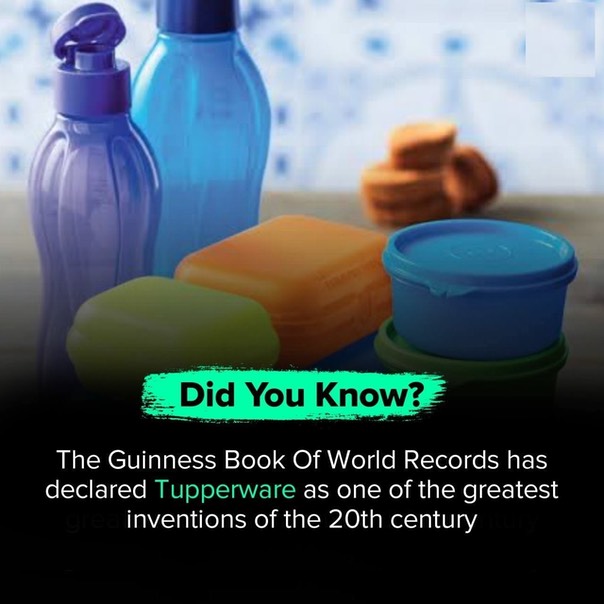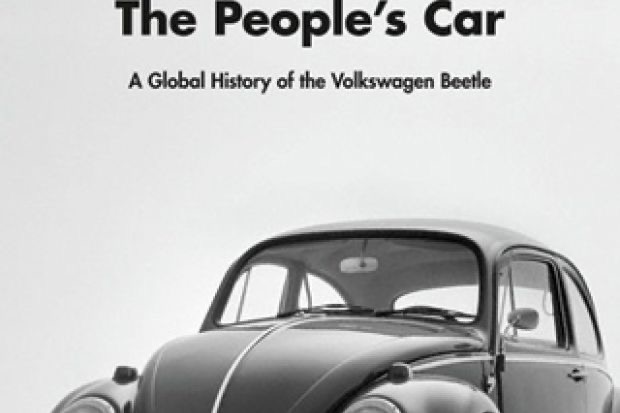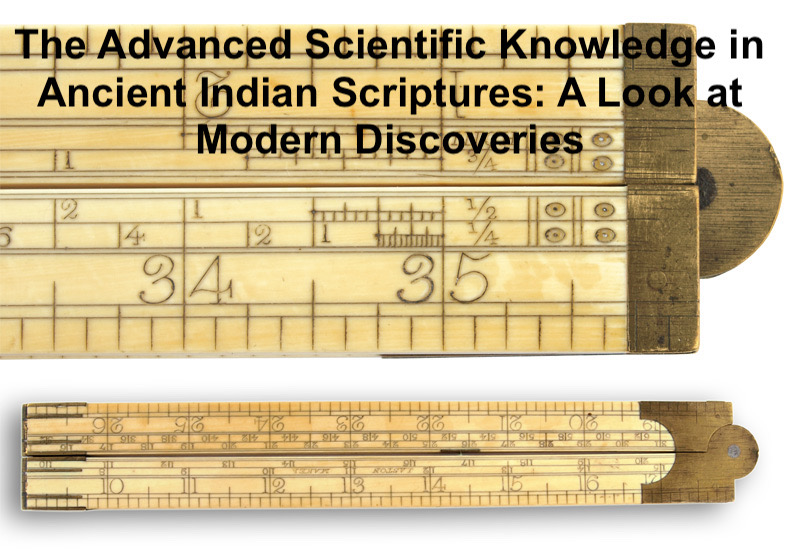Did You Know
Tupperware: Revolutionizing Food Storage and Earning a Place in History

The Guinness Book of World Records has declared Tupperware as one of the greatest inventions of the 20th century.
Discover the remarkable story behind Tupperware, hailed as one of the greatest inventions of the 20th century by the Guinness Book of World Records. This article explores how Tupperware revolutionized food storage, empowered women through innovative marketing, and continues to shape our kitchens today.
In the vast realm of inventions that have shaped our modern world, the Guinness Book of World Records has bestowed a prestigious title upon Tupperware. Recognizing its profound impact on households worldwide, the book declares Tupperware as one of the greatest inventions of the 20th century. From its inception, Tupperware revolutionized food storage, transforming how we preserve, organize, and even present our meals. This article delves into the significance of Tupperware and its enduring legacy.
The Guinness Book of World Records, known for recognizing exceptional human achievements and groundbreaking inventions, has bestowed the prestigious title of "One of the Greatest Inventions of the 20th Century" upon Tupperware. Developed by Earl Silas Tupper in the 1940s, this innovative storage system revolutionized the way we preserve, store, and organize food. This article explores the fascinating journey of Tupperware and why it deserves this esteemed recognition.
The Birth of Tupperware
Earl Tupper, an inventive and forward-thinking American engineer, created Tupperware to transform conventional food storage methods. He revolutionized the industry by introducing airtight containers made of polyethylene plastic. This unique material helped preserve the freshness, flavor, and quality of food for extended periods.
The Airtight Seal
One of the key features that set Tupperware apart was its airtight seal. Tupper's patented design employed a burping seal mechanism, which allowed users to easily remove excess air and create an airtight environment. This innovative concept prevented spoilage and maintained the freshness of the stored food, making Tupperware containers an invaluable addition to kitchens worldwide.
Durability and Versatility
Tupperware's durability and versatility further cemented its position as an outstanding invention. The containers were resistant to breakage, staining, and odors, making them suitable for a wide range of uses. From storing leftovers and pantry staples to organizing items in the refrigerator, freezer, or even on the go, Tupperware provided endless possibilities for efficient storage and organization.
A Breakthrough in Food Preservation:
Tupperware, the brainchild of Earl Silas Tupper, made its debut in the early 1940s. This innovative product marked a significant departure from traditional storage methods prevalent at the time. Tupper, a chemist by profession, developed airtight containers made from a durable, non-toxic, and flexible plastic material called polyethylene. These containers were designed to lock in freshness and extend the shelf life of food, effectively preventing spoilage and waste.
Sealing the Deal with the Burping Lid:
One of the key features that set Tupperware apart was its unique "burping" lid. Unlike conventional containers, Tupperware lids created an airtight seal, preventing air and moisture from entering the container. The burping mechanism allowed excess air to escape while preserving the optimal environment for food storage. This ingenious design element effectively maintained the freshness, flavor, and nutritional value of the stored food, revolutionizing the way we approached food preservation.
Versatility and Convenience:
Tupperware's impact extended beyond its preservation capabilities. Its modular design allowed for efficient stacking and storage, optimizing space in crowded kitchens. The brand offered a diverse range of container sizes and shapes, catering to various needs and culinary requirements. From compact lunch boxes to large-capacity containers, Tupperware provided unparalleled versatility.
Furthermore, Tupperware introduced an array of complementary products, such as serving trays, bowls, and microwave-safe cookware. This versatility made Tupperware a household name and a staple in kitchens around the world. It allowed for seamless food preparation, storage, and serving, streamlining daily routines and enhancing convenience for millions of households.
Cultural Phenomenon and Empowering Women:
Tupperware's success was not solely due to its functional merits but also owed much to its unique marketing approach. Earl Tupper, recognizing the potential of direct sales, partnered with Brownie Wise in the 1950s. Wise pioneered the concept of "Tupperware parties," inviting women to host gatherings where Tupperware products were showcased, demonstrated, and sold.
This marketing strategy provided an opportunity for women to enter the workforce and earn income, fostering financial independence and empowerment. Tupperware parties became a cultural phenomenon, spreading across the United States and eventually around the world. The brand's success was deeply intertwined with the changing social dynamics of the time, impacting women's roles in business and entrepreneurship.
The Tupperware Party Phenomenon
Tupperware's success can be partly attributed to the iconic marketing strategy of hosting Tupperware parties. These gatherings, popularized by Brownie Wise, a savvy saleswoman, and Tupperware's vice president, allowed hosts to showcase the product to friends and acquaintances. The concept took off, turning Tupperware into a household name and solidifying its reputation as an indispensable kitchen accessory.
Enduring Legacy:
Today, Tupperware continues to hold a prominent place in kitchens globally. Its commitment to innovation has led to the introduction of advanced features, such as microwave-safe containers, venting mechanisms, and modular storage systems. Tupperware's influence transcends generations, as its products continue to adapt to evolving lifestyles and consumer demands.
Global Impact
Tupperware's impact extended beyond the American market. The company expanded its reach to countries worldwide, introducing millions of households to the convenience and functionality of its products. Its widespread success transformed Tupperware into a cultural icon, influencing food storage habits and inspiring countless imitations.
Guinness World Records Recognition
The Guinness Book of World Records acknowledges Tupperware's immense impact by designating it as one of the greatest inventions of the 20th century. This recognition serves as a testament to Tupperware's enduring relevance and the positive impact it has had on households across the globe.
Tupperware Today
In the digital age, Tupperware continues to innovate and adapt to changing consumer needs. The brand has expanded its product line to include various sizes, shapes, and specialized containers to accommodate different food types and storage requirements. Additionally, Tupperware now incorporates eco-friendly practices, focusing on sustainability and reducing plastic waste.
The Guinness Book of World Records' recognition of Tupperware as one of the greatest inventions of the 20th century reinforces its profound impact on society. By revolutionizing food storage, empowering women, and redefining convenience in the kitchen, Tupperware has earned its place in history as an enduring symbol of ingenuity and practicality.
Tupperware's inclusion in the Guinness Book of World Records as one of the greatest inventions of the 20th century is a testament to its remarkable contribution to modern society. Earl Tupper's vision and innovative approach revolutionized food storage and organization, providing households with a convenient and efficient solution. Tupperware's enduring popularity and continued evolution demonstrate its timelessness and adaptability. As we enter the 21st century, Tupperware remains an iconic brand that continues to enhance how we store and preserve food, earning its place among the world's most celebrated inventions.
The Evolution of ABSOLUT VODKA: Winter Wheat, Sustainability, and Uncompromising Quality

Sanjay K Mohindroo
Discover the fascinating evolution of ABSOLUT VODKA, a renowned spirit beloved for its smoothness and unique flavor profile. Learn about the key ingredient behind its success - two pounds of winter wheat. This article explores the significance of winter wheat, its high starch content, sustainability, and ABSOLUT's commitment to avoiding genetically modified ingredients.
The Evolution of ABSOLUT VODKA: The Key Ingredient and its Importance.
When it comes to vodka, ABSOLUT is a name that stands out among the rest. Renowned for its smoothness and distinct flavor, ABSOLUT VODKA has gained immense popularity worldwide. Behind its success lies a key ingredient - winter wheat. This article explores the evolution of ABSOLUT VODKA and the significance of using two pounds of winter wheat in its production.
Winter wheat, scientifically known as Triticum aestivum, is a cereal grain that has been cultivated for centuries. It holds a special place in the creation of ABSOLUT VODKA due to its high starch content, making it an ideal choice for vodka production. The use of winter wheat imparts a unique character to ABSOLUT VODKA and contributes to its smooth and refined taste.
One of the reasons winter wheat is preferred over other grains is its remarkable resilience. This plant possesses exceptional hardiness, making it less susceptible to adverse weather conditions and diseases. Consequently, ABSOLUT VODKA's production process benefits from this sturdiness, as it ensures a consistent supply of high-quality raw materials.
Moreover, the robust nature of winter wheat allows for its cultivation without the use of pesticides and fertilizers. ABSOLUT has long embraced sustainable practices, and its commitment to environmental responsibility is reflected in its choice of ingredients. By using winter wheat, ABSOLUT reduces the environmental impact of its production process and helps maintain a healthy ecosystem.
ABSOLUT's decision to avoid genetically modified ingredients in its vodka is another crucial aspect of its commitment to quality and sustainability. While genetically modified organisms (GMOs) have been a topic of debate, ABSOLUT VODKA chooses to stay true to its roots by steering clear of any genetic modifications. This decision ensures that consumers can enjoy vodka that is as close to nature as possible, free from any alterations.
The evolution of ABSOLUT VODKA is a testament to the brand's dedication to excellence. From its humble beginnings in 1879 in the small town of Åhus, Sweden, ABSOLUT has consistently strived for perfection. The use of two pounds of winter wheat has become an iconic feature of their production process, symbolizing their unwavering commitment to quality and craftsmanship.
Over the years, ABSOLUT VODKA has garnered a loyal following worldwide. Its smoothness, versatility, and distinct character have made it a favorite among vodka enthusiasts and cocktail aficionados alike. The key ingredient, winter wheat, plays an integral role in achieving the desired taste and ensuring a memorable drinking experience.
ABSOLUT VODKA's success can be attributed, in part, to its key ingredient - two pounds of winter wheat. The high starch content, coupled with the sturdy nature of the plant, makes it an ideal choice for vodka production. By avoiding the use of pesticides, fertilizers, and genetically modified ingredients, ABSOLUT emphasizes its commitment to sustainability and providing a premium, natural product. So, the next time you raise a glass of ABSOLUT VODKA, remember the evolution behind its creation and savor the craftsmanship that goes into every sip.
The Fascinating Story Behind STARBUCKS Iconic Logo and its History.

Explore the captivating journey of Starbucks, from its humble beginnings in Seattle to becoming a global coffeehouse phenomenon. Discover the intriguing story behind the evolution of the Starbucks logo and the symbolism behind its iconic mermaid design.
Starbucks is a globally recognized coffeehouse chain that was founded in Seattle, Washington, in 1971. The company has since become one of the world's largest and most well-known coffee brands. Here's a brief story behind its logo and the history of Starbucks:
The Story behind the Logo:
The Starbucks logo has evolved but has consistently featured a twin-tailed mermaid, commonly known as a siren. The original logo was designed in 1971 and depicted a topless mermaid with two tails, which was considered too provocative. Over the years, the logo has undergone modifications to make it more modest while retaining its distinctive features.
The mermaid in the logo is inspired by Greek mythology, specifically the siren—a creature that lured sailors with its enchanting voice and appearance. The founders chose the mermaid to represent the alluring and seductive nature of coffee.
The current version of the Starbucks logo, introduced in 2011, focuses on the siren, removing the textual elements and simplifying the design. The image of the mermaid is green, representing growth, freshness, and environmental consciousness, which are values that Starbucks aims to embody.
The logo has become iconic and is now widely recognized as a symbol of Starbucks. It reflects the company's commitment to delivering a unique and captivating coffee experience to its customers.
The siren logo of STARBUCKS is used to indulge people in the seductive character of the coffee.
History of Starbucks:
1. Origins: Starbucks was founded by three partners—Jerry Baldwin, Zev Siegl, and Gordon Bowker—who were inspired by Alfred Peet, a renowned coffee roasting entrepreneur. They opened the first Starbucks store on March 30, 1971, in Seattle's Pike Place Market. Initially, the store only sold coffee beans and coffee-making equipment, rather than serving brewed coffee.
2. Expansion and Success: In 1982, Howard Schultz joined Starbucks as the Director of Retail Operations and Marketing. After a trip to Italy, where he experienced the rich coffeehouse culture, Schultz envisioned a similar concept for Starbucks. However, the original owners weren't interested, so Schultz left and opened his coffeehouse chain called Il Giornale.
3. Schultz's Acquisition: In 1987, Schultz purchased Starbucks from its original owners with the help of investors and merged his Il Giornale stores with Starbucks. He became the CEO and began expanding the company rapidly. By the early 1990s, Starbucks had grown to more than 100 stores.
4. Global Expansion: Starbucks went public in 1992, allowing it to raise capital for further expansion. The company ventured beyond the United States, opening its first international store in Tokyo, Japan, in 1996. Since then, Starbucks has experienced remarkable global growth, with thousands of stores established in various countries around the world.
The Tragic Story of the Marlboro Man: From Iconic Ad Campaign to Anti-Smoking Advocate

The Marlboro Man was a beloved advertising icon that embodied the rugged, independent spirit of America. However, the tragic story of one of the actors who portrayed the Marlboro Man, Wayne McLaren, reveals the devastating toll that smoking can take on individuals and families.
The Marlboro Man was a popular advertising campaign for Marlboro cigarettes that ran from the 1950s until the late 1990s. The campaign featured rugged, masculine men, often depicted riding horses or engaged in other outdoor activities, and was designed to appeal to men who valued independence and self-sufficiency.
Over the years, several actors portrayed the Marlboro Man, but one of the most well-known was Wayne McLaren, who appeared in advertisements for Marlboro in the late 1970s. McLaren was a former rodeo rider and stuntman who embodied the rugged, outdoorsy image that Marlboro was trying to convey. However, in 1992, McLaren was diagnosed with lung cancer, which he attributed to his years of smoking Marlboro cigarettes.
McLaren became a vocal anti-smoking advocate after his diagnosis, and he appeared in several public service announcements urging people to quit smoking. He died in 1992 at the age of 51.
The story of Wayne McLaren highlights the dangers of smoking and the deceptive nature of tobacco advertising. The Marlboro Man campaign was incredibly effective at promoting cigarettes to men, but it also had a devastating impact on public health. McLaren's death is a tragic reminder of the toll that smoking can take on individuals and families.
Today, tobacco advertising is heavily regulated in many countries, and cigarette companies are required to include warning labels on their products. However, smoking remains a major public health issue, and many people continue to struggle with addiction to tobacco products. The legacy of the Marlboro Man serves as a cautionary tale about the dangers of tobacco and the importance of promoting healthy behaviors.
The Meaning Behind the Name Volkswagen: "People's Car" Explained

Have you ever wondered why Volkswagen is called the "People's Car" in German? In this article, we will explore the history behind the name Volkswagen and the story of the iconic car that inspired it.
The name Volkswagen, which is often abbreviated as VW, means "People's Car" in German. This name reflects the original purpose behind the creation of the company and its flagship vehicle, the Volkswagen Beetle.
In the early 1930s, Germany was undergoing a period of economic turmoil and many people could not afford to buy a car. As a result, the German government tasked Ferdinand Porsche, a renowned automotive engineer, with designing a car that was affordable and accessible to the general public.
Porsche came up with a design for a small, practical car that was powered by an air-cooled engine and had a streamlined, beetle-shaped body. The car was initially called the KdF-Wagen, which stood for "Strength through Joy Car" in German, and was meant to be sold to members of a government-run organization called the "Strength through Joy" program.
However, with the outbreak of World War II, production of the KdF-Wagen was halted, and the factory was converted to produce military vehicles. After the war, the factory was handed over to the British army, who eventually sold it back to the German government.
In 1945, the company was renamed Volkswagenwerk GmbH, and the KdF-Wagen was rebranded as the Volkswagen Type 1, or simply the Volkswagen Beetle. The Beetle quickly became a popular car in Germany and around the world, and the Volkswagen brand grew to become one of the largest and most recognizable in the automotive industry.
The name Volkswagen, therefore, reflects the company's original mission to create a car that was accessible to everyone, regardless of their social or economic status. Today, the Volkswagen brand continues to embody this spirit of accessibility and innovation, with a wide range of vehicles that are designed to meet the needs of drivers around the world.
Nokia: From Wood Mill to Mobile Behemoth - A Journey of Innovation and Adaptation

From wood mill to mobile behemoth: Learn about Nokia's fascinating journey from its humble origins in Nokia City, Finland to becoming a global leader in the mobile phone industry, and the importance of innovation, adaptation, and diversification in business.
Nokia, one of the most well-known mobile phone brands today, has an interesting history that dates back to its origins as a wood mill in Nokia City, Finland.
Nokia started as a wood mill in Nokia City, Finland before venturing into the rubber products industry and eventually becoming a famous mobile behemoth. Learn about Nokia's journey and the importance of innovation, adaptation, and diversification in business.
It's interesting to note the humble beginnings of Nokia as a wood mill in Finland and its transition into the rubber products segment before becoming the well-known mobile behemoth it is today. Nokia's evolution into different industries reflects its adaptability and willingness to innovate, which has been a key factor in its success over the years.
It also highlights the importance of diversification in business, as Nokia's ventures into various industries allowed the company to stay relevant and profitable over time. This is a valuable lesson for other companies looking to sustain their growth and success in the long run.
Nokia's history serves as an inspiration for aspiring entrepreneurs and a testament to the power of innovation, adaptation, and diversification in business.
These Interesting Facts About Nokia Will Surprise You!
Lately, the world has graduated from the playschool era. Pigeons are now substituted with a gadget called 'Mobile'. The stakeholders keep on trying to evolve and lurch past the pace of the cosmos. In the meantime, there are a lot of things that came into the limelight after someone or the other discovered them.
One such profound discovery is the mobile phone. Nowadays most commonly known as a smartphone, was first discovered in 1973 in its basic form. The model was not a lot smart but was like a well amid a desert.
Nokia is one such company that is famous worldwide for its range of mobile phones. Nokia's products were like a wand of magic for the former generation of people. It is one of those very few companies which helped people connect sitting far away from each other. So let us today have a look at some wonderful facts about the company which was loved the most by our father generation. But before we savor the delicious facts, let us just have a brief glimpse of the company's highlights.
Interesting Facts about Nokia
Now, let us dive deeper into the facts that we have mentioned just above. Knowing about the details is going to be a really fun activity now and we hope you get amazed by every sub-point.
Origin
The company took its very first breath in the year 1865. There is a slight twist here though. The company didn't start as a mobile-producing giant. It was instead a paper mill. The company produced paper pulp in Finland. Fredrik Idestam had set up this factory then. After a few years in 1871, with the help of his friend Leo Mechelin, the paper pulp company transformed into a share company. After that, the name Nokia came into the market.
Naming
- The company was built on the bank of the Nokianvirta River and that's why the founders named it Nokia.
- Nokia was established as a pulp mill on the shore of Tammerkoski. It has other branches like Nokia rubber boots and cable works and in modern times Nokia is famous for its durable mobile phones. These branches together formed the Nokia cooperation.
- Many people must have heard about the famous guitar work named 'Gran Vals' of the 19th century. It was done by a Spanish musician Francisco Tarrega. From here the tune arrived for Nokia in 1999.
- It is a very common belief in most parts of Asia that the number 04 resembles the sound of absolute death. The production team of Nokia keeps the same in mind and till now has not made a single model of Nokia which starts from the number 04.
- When we talk about the first phone without an external antenna attached to the phone, it's too obvious that model 8810 of Nokia comes flashing in front of the eye. It was the first Nokia set that had no external antenna to it. It was launched in 1998 and was the most luxurious mobile back then. Adding more spices to it, it also had chrome plating.
- Nokia 3310 is no less than Thanos of Avengers. It is more commonly and widely known as the 'Unbreakable phone' of history. It had the best durability back then. The fun fact is that people used to throw their phones with loud confidence to show off their durability.
- In Helsinki city of Finland on 1st July 1991, the world's first GSM phone call was made. The call was made by the honorable prime minister of Finland, Mr. Harris Holkeri using a model of the Nokia company.
- Every child wishes to get a phone which has a pre-installed game, which they can play without spending a dollar. Nokia 6110 was the dream-come-true set for game lovers. It came with a pre-installed snake game which became very popular and was loved by all and is still missed by many people who were once a child back then.
- The first camera phone from the Nokia House came in the year 2002 its model number is 7650. Though it only had a camera of 0.3 megapixels.
- It is a very interesting fact that the SMS tone of Nokia is a Morse code that is used for 'connecting people and SMS'.
- As per a list of 2006 survey, Nokia was the 20th most admirable company in the world.
- As per the last calculation in the year 2019, Nokia had a net worth of 15.4 billion euros.
- The
achievements and awards of Nokia are listed below -
- World's most ethical company in 2021 by Ethisphere
- National Academy of Television Arts and Sciences in 2020
- Best secured network initiative in 2019
- Nokia 9 is the till date best model of Nokia with 5 cameras and a decent processor.
Nokia has been one of the best mobile-producing companies in the world along with other branches of it. It has always stood on the expectations and is best known for its camera features. The people of the 90s still brag about how they used to use Nokia phones back then. Nokia is not just a company but is an emotion for its regular users.
The Advanced Scientific Knowledge in Ancient Indian Scriptures: A Look at Modern Discoveries

The ancient Indian scriptures contain a wealth of knowledge and wisdom that has fascinated scholars and researchers for centuries. In recent years, modern science has been able to confirm many of the scientific facts mentioned in these texts, highlighting the advanced understanding of the natural world that existed in ancient India.
Ancient Indian scriptures, including the Vedas, Upanishads, and Puranas, are renowned for their rich philosophical and spiritual insights. However, these texts also contain a wealth of knowledge and observations about the natural world. Modern scientific discoveries have confirmed many of these observations, suggesting that ancient Indian societies were more advanced scientifically than commonly thought.
The Vedas, for example, contain detailed descriptions of the universe, including its origin, structure, and functioning. They describe the sun, moon, stars, and planets and their orbits, as well as the cycles of day and night, seasons, and eclipses. The Puranas contain descriptions of various living creatures, including humans, animals, and plants, and their characteristics, behavior, and habitat.
Recent scientific discoveries have confirmed many of these ancient observations. For example, the Vedic description of the universe as a cyclical process of creation and destruction is consistent with modern cosmological theories, such as the Big Bang and the cyclic universe model. The Vedas also describe the concept of relativity and the unity of matter and energy, which are fundamental principles of modern physics.
Similarly, the Puranas contain detailed descriptions of the human body, including its anatomy, physiology, and pathology. Ayurveda, the ancient Indian system of medicine, is based on these observations and provides a comprehensive understanding of health and disease. Modern research has confirmed the efficacy of Ayurvedic treatments and has led to the discovery of new therapeutic compounds.
It is clear that ancient Indian societies had a deep understanding of the natural world and made significant contributions to scientific knowledge. However, it is important to note that scientific progress is not linear and is influenced by various social, political, and economic factors. While ancient Indian societies may have been more advanced scientifically in certain areas, they also faced limitations and challenges that impeded progress in other areas.
Furthermore, modern scientific discoveries have expanded our understanding of the natural world and have enabled us to develop new technologies and improve our quality of life. While we can learn from the insights of ancient Indian scriptures, we must also recognize the value of modern scientific methods and knowledge.
In conclusion, ancient Indian scriptures contain a wealth of knowledge and observations about the natural world that have been confirmed by modern scientific discoveries. While ancient Indian societies were more advanced scientifically in certain areas, they also faced limitations and challenges. We must appreciate the insights of ancient Indian scriptures while also recognizing the value of modern scientific knowledge and methods.
It would be incorrect to conclude that modern science is merely rediscovering what was already known in ancient India. While ancient Indians certainly made significant scientific discoveries and observations, modern science has advanced considerably in terms of technology, methodology, and knowledge. Modern science has built upon the foundation laid by ancient Indian scholars and has made many discoveries and breakthroughs that were not possible in ancient times.
It is important to recognize that scientific progress is a continuous and cumulative process. Each generation builds upon the knowledge and discoveries of the previous generation, and discoveries are made as a result of advancements in technology, methodology, and understanding. While ancient Indians made important contributions to science, modern science has made significant progress in many areas, such as medicine, physics, chemistry, and engineering.
Furthermore, it is important to recognize that scientific knowledge is not static, but constantly evolving. Discoveries are made all the time, and scientific theories and models are refined and revised as new evidence emerges. Therefore, it would be inaccurate to suggest that modern science is merely rediscovering what was already known in ancient India.
There are several possible explanations for how ancient Indians could have known about the scientific facts mentioned in their scriptures. Some scholars believe that ancient Indian scientists and scholars may have made these discoveries through careful observation and experimentation, using methods that were passed down through generations.
Others argue that ancient Indian knowledge was based on a deep understanding of spiritual and philosophical concepts, which allowed scholars to make intuitive leaps and connections between seemingly unrelated fields of study. For example, some scholars believe that the concept of "prana" (life force energy) in Ayurvedic medicine may be linked to the modern concept of energy in physics.
Still, others believe that ancient Indian knowledge may have been passed down from more advanced civilizations that existed in ancient times. For example, some scholars believe that the ancient Indus Valley civilization may have had advanced knowledge of metallurgy and urban planning that was later passed down to the Vedic civilization.
Ultimately, the origins of ancient Indian knowledge remain the subject of ongoing research and debate. What is clear, however, is that the scientific and intellectual legacy of ancient India is vast and continues to inspire and inform scientific research today.
While ancient Indians made significant scientific discoveries and observations, modern science has advanced considerably in terms of technology, methodology, and knowledge. Modern science has built upon the foundation laid by ancient Indian scholars and has made many discoveries and breakthroughs that were not possible in ancient times. Therefore, it would be incorrect to conclude that modern science is simply rediscovering what was already known in ancient India.
There are several scientific facts mentioned in ancient Indian scriptures that have been verified by modern science. Here are some examples:
- The concept of atoms: The ancient Indian text, the Vaisheshika Sutra, describes atoms as the smallest indivisible units of matter. Modern science has confirmed the existence of atoms and their role as the building blocks of matter.
- The Earth’s rotation: The Rigveda describes the Earth as rotating on its axis, which was later confirmed by modern science.
- The heliocentric model of the solar system: The Surya Siddhanta, an ancient Indian text, describes the sun as the center of the solar system with the planets orbiting around it. This is consistent with the modern heliocentric model of the solar system.
- Ayurveda: Ayurveda, the ancient Indian system of medicine, describes the importance of a healthy diet, exercise, and lifestyle in maintaining good health. Modern science has confirmed the importance of these factors in preventing disease and promoting overall health.
- Yoga: The ancient Indian practice of yoga has been found to have numerous health benefits, including reducing stress, improving flexibility, and enhancing mental clarity. Modern research has confirmed the efficacy of yoga in promoting physical and mental well-being.
- The water cycle: The ancient Indian text, the Vishnu Purana, describes the water cycle, including the evaporation of water from the oceans and its precipitation as rain. This is consistent with modern scientific understanding of the water cycle.
- Plastic surgery: The ancient Indian text, the Sushruta Samhita, describes various surgical procedures, including rhinoplasty (nose surgery) and reconstructive surgery. These techniques are effective and are still used today.
- Astronomy: The ancient Indian text, the Siddhanta Shiromani, contains detailed astronomical observations and calculations, including the distance between the earth and the moon, the size and shape of the earth, and the duration of the day and night. Modern science has confirmed many of these calculations.
- Mathematics: Ancient Indian mathematicians made significant contributions to the field, including the invention of the decimal system and the concept of zero. These concepts were later adopted by the Arab world and Europe, leading to the development of modern mathematics.
- Sound and music: The ancient Indian text, the Natyashastra, describes the physics of sound and the science of music, including the relationship between musical notes and mathematical ratios. Modern science has confirmed the relationship between sound and mathematics and the importance of music in promoting physical and emotional well-being.
- Botany: The ancient Indian text, the Charaka Samhita, describes the properties and uses of various plants and herbs in medicine. Many of these plants have been found to have medicinal properties and are still used in modern medicine.
- Metallurgy: The ancient Indian text, the Arthashastra, contains detailed descriptions of metallurgy, including the extraction and purification of metals such as gold and silver. Modern science has confirmed the accuracy of these descriptions and techniques.
- Architecture and urban planning: The ancient Indian text, the Manasara, contains detailed instructions on the design and construction of buildings and cities, including the use of geometry and mathematics in architecture. Many ancient Indian cities were designed according to these principles, and some of them still exist today.
- Environmental conservation: The ancient Indian text, the Manusmriti, contains guidelines for environmental conservation, including the protection of forests and wildlife. These ideas are still relevant today and have been incorporated into modern environmental conservation efforts.
- Genetics: The ancient Indian text, the Mahabharata, contains references to genetic traits and heredity, including the passing on of physical and behavioral characteristics from parents to offspring. This is consistent with the modern understanding of genetics.
- Psychology: The ancient Indian text, the Yoga Sutras of Patanjali, describes the workings of the human mind and the techniques for achieving mental balance and clarity. Many of these techniques, such as meditation and mindfulness, have been found to have therapeutic benefits and are widely used in modern psychology.
- Geology: The ancient Indian text, the Brihat Samhita, contains descriptions of various geological features, such as mountains, rivers, and earthquakes. These descriptions are consistent with modern scientific understanding of geology.
- Agriculture: The ancient Indian text, the Arthashastra, contains detailed instructions on agriculture, including irrigation techniques, crop rotation, and soil conservation. Many of these techniques are still used today and be effective in improving crop yields and soil health.
- Medicine: The ancient Indian texts, the Charaka Samhita and Sushruta Samhita describe various medical conditions and their treatments, including surgical procedures such as cataract surgery and rhinoplasty. Many of these techniques are still used in modern medicine.
- Astronomy and astrology: Ancient Indian texts, such as the Brihat Jataka and the Surya Siddhanta, contain detailed observations of the movement of celestial bodies and their influence on human affairs. While modern science has debunked the idea of astrology, the accurate astronomical observations and calculations made by ancient Indian scholars have been validated by modern scientific research.
- Physics: The ancient Indian text, the Surya Siddhanta, contains detailed observations of the physical properties of the sun, including its size, temperature, and gravitational pull. These observations were made centuries before similar discoveries were made in the West.
- Philosophy: Ancient Indian philosophical texts, such as the Vedas and Upanishads, contain profound insights into the nature of reality and consciousness. These ideas have influenced modern philosophy and have been the subject of ongoing scientific research in fields such as neuroscience and psychology.
- Linguistics: The ancient Indian text, Panini's Ashtadhyayi, contains a detailed analysis of the structure of Sanskrit grammar. This analysis is consistent with modern linguistic theories and has influenced the development of linguistic research.
- Mathematics: Ancient Indian mathematicians made significant contributions to the development of mathematics, including the invention of the decimal system and the concept of zero. These ideas were not widely adopted in the West until several centuries later.
- Metallurgy: The ancient Indian text, the Arthashastra, contains detailed instructions on metallurgy, including the extraction and purification of metals such as gold, silver, and copper. These techniques were highly advanced for their time and have been the subject of ongoing research in modern metallurgy.
- Ayurveda: Ayurveda is an ancient Indian system of medicine that focuses on maintaining balance and harmony within the body. It emphasizes the use of natural remedies and lifestyle changes to prevent and treat illness. While some aspects of Ayurveda are effective, others remain controversial and are the subject of ongoing research.
- Music: Ancient Indian texts, such as the Natyashastra, contain detailed descriptions of music theory and practice, including the use of different scales and rhythms. Many of these ideas have influenced modern music theory and continue to inspire contemporary musicians.
- Ethics: Ancient Indian texts, such as the Bhagavad Gita, contain profound insights into ethical behavior and the nature of the self. These ideas have influenced modern philosophy and have been the subject of ongoing research in fields such as psychology and neuroscience.
- Sociology: Ancient Indian texts, such as the Arthashastra, contain detailed observations and insights into social structures and human behavior. These ideas have influenced modern sociology and continue to inform ongoing research in the field.
The advanced scientific knowledge that existed in ancient India is evidenced by the numerous scientific facts mentioned in their scriptures that have been confirmed by modern science. These examples demonstrate the breadth and depth of scientific knowledge that existed in ancient India and the significant contributions made by ancient Indian scholars to various fields of science. While modern science has made many discoveries and advancements, it is important to acknowledge and appreciate the scientific legacy of ancient India and how it has informed and inspired modern scientific research. However, it is important to note that ancient Indian knowledge was not always scientifically accurate or applicable to all fields, and some ideas remain controversial and the subject of ongoing research and debate. Nevertheless, the contributions made by ancient Indian scholars to the development of science and knowledge cannot be denied and continue to influence modern science and research today.
There is no direct mention of computers in ancient Indian scriptures, as the concept of modern-day computers did not exist during that time. However, there are some references to devices and machines that have been interpreted by some scholars as possible references to advanced technological devices, including computers.
For example, the ancient Indian epic, the Mahabharata, mentions a flying machine called the Vimana, which was said to be powered by a mysterious energy source called the "Meru-ghanta." Some scholars have interpreted this Vimana as a type of advanced aircraft or even a spacecraft. Similarly, the ancient Indian text, the Sushruta Samhita, mentions a device called the Yantra Sarvasva, which is believed by some to be a type of advanced surgical instrument that may have had some computing capabilities.
It is important to note, however, that these interpretations are highly speculative and are not supported by any concrete evidence or scientific proof. While ancient Indian scholars may have had advanced knowledge of mathematics, astronomy, and other fields, the concept of modern-day computers, as we know them today, did not exist during that time.
Therefore, while there may be some references in ancient Indian scriptures that suggest advanced technological devices, it is important to approach these interpretations with caution and not assume that they refer to modern-day computers or other advanced devices.
There are references to aircraft-like devices in ancient Indian scriptures. The most famous of these references are found in the ancient Indian epic, the Ramayana, which describes a flying chariot called the Pushpaka Vimana. According to the text, the Pushpaka Vimana was a large, beautiful, and highly advanced flying vehicle that could travel great distances in the air. It was described as being powered by a "powerful aerial motor" and was said to be able to fly at incredible speeds.
Similarly, the Mahabharata, another ancient Indian epic, also contains references to flying machines called Vimanas. These Vimanas were described as being able to fly great distances and even travel to other planets. The text also mentions the use of various weapons and defenses on these Vimanas, suggesting that they were highly advanced and sophisticated machines.
Some scholars have suggested that these references to flying machines may be symbolic or metaphorical, rather than literal descriptions of actual aircraft. Others, however, have suggested that these descriptions may be evidence of advanced technological knowledge in ancient India, and may even indicate the existence of some type of flying device during that time.
It is important to note that there is no concrete evidence to support the existence of actual flying machines in ancient India, and much of the evidence for these devices comes from interpretations of ancient texts. Nevertheless, these references to aircraft-like devices in ancient Indian scriptures are intriguing and suggest that ancient Indian scholars had a keen interest in the possibilities of flight and advanced technology.
The History and Meaning Behind the LEGO Brand

The word "LEGO" is indeed derived from the Danish phrase "Leg Godt," which means "play well" in English. LEGO was founded in Denmark in 1932 by Ole Kirk Christiansen, who started by making wooden toys before transitioning to plastic bricks in the late 1940s. The LEGO Group trademarked the name "LEGO" in 1934, and the company has been using the name ever since.
It's interesting to note that in Latin, the word "LEGO" means "I put together" or "I assemble." This Latin meaning is particularly relevant to the LEGO brand because it emphasizes the importance of the building aspect of the toy. LEGO sets are designed to encourage creativity and problem-solving, as children construct models using the interlocking bricks.
The name "LEGO" perfectly captures the essence of the toy. It emphasizes the importance of play and creativity while also highlighting the fundamental building aspect that makes LEGO sets so unique and engaging.
The history of LEGO dates back to 1932 when a Danish carpenter named Ole Kirk Christiansen started a small company in Billund, Denmark, making wooden toys.
After World War II, LEGO began producing plastic toys, and in 1949, they introduced the LEGO brick, which would become their flagship product. The interlocking plastic bricks allowed children to build and create different structures, sparking their imagination and creativity. Over the years, LEGO has expanded its product line to include themed sets, such as space exploration, castle building, and even popular franchises like Star Wars and Harry Potter.
In the 1960s and 70s, LEGO faced financial difficulties due to the rise of electronic toys, but they were able to recover by diversifying their product line and expanding their global presence. Today, LEGO is one of the most recognizable toy brands in the world, with a presence in more than 140 countries and a product line that includes not only traditional bricks but also video games, theme parks, and movies.
LEGO's enduring popularity can be attributed to its ability to evolve with the times while still staying true to its core principles of encouraging creativity, imagination, and problem-solving through play.
